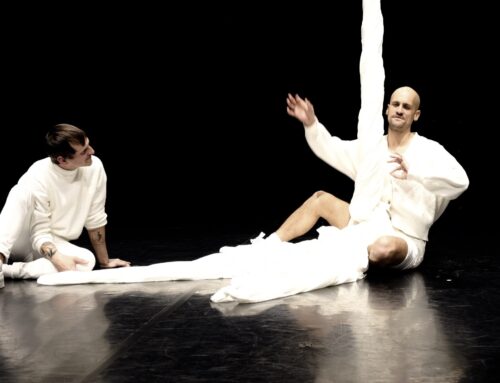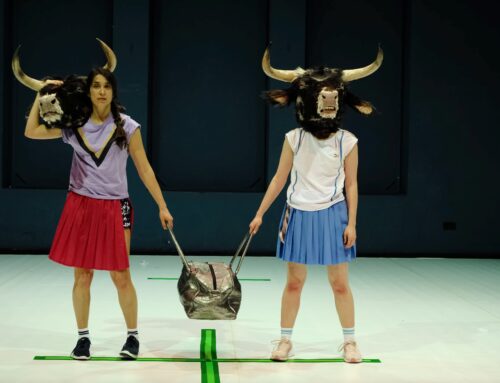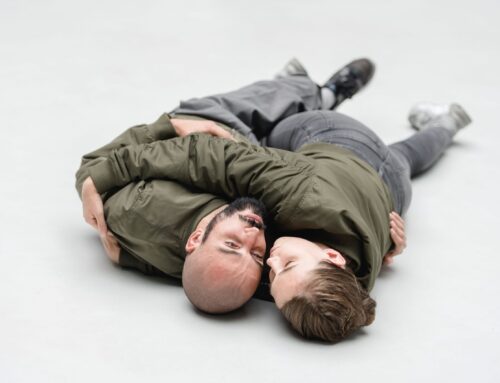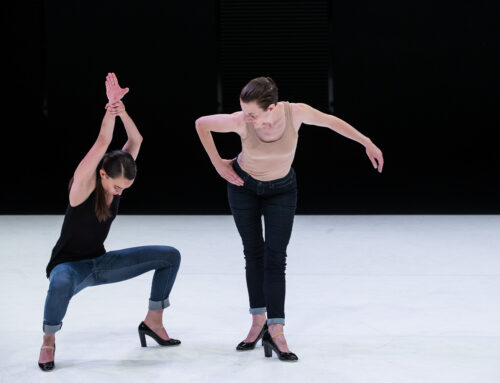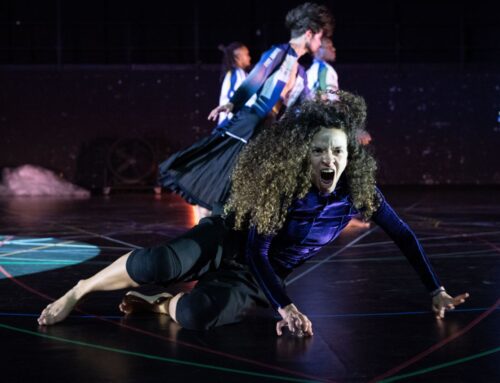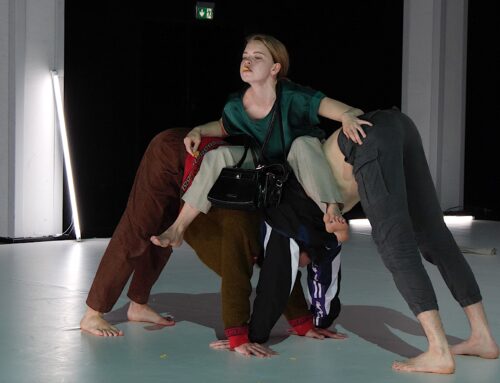THE VALLEY AND ITS WONDER
WONDER VALLEY?
WANTED: THE HYBRID DANCE ENGINE – A perhaps surprisingly polarising conclusion to nine days of „Wundertal“ if you focus it on the core of the expectations of the new artistic director’s tasks – it has turned out to be a festival by, with and for Boris Charmatz
conclusions and opinion by Klaus Dilger
If we look at Boris Charmatz and his label [terrain] in isolation, the WUNDERTAL week should have been a complete success for him, the new artistic director of the Wuppertal Dance Theatre. A look at the design of the programme and the accompanying programme booklet shows that this is precisely what the entire nine-day event was intended to be: „… „Wundertal“ is an attempt at a landing,“ says Charmatz. What is meant here is his own…
UNDER THE SUSPENSION RAILWAY
This is probably most spectacularly true of the week’s opener: The weather, the location, the organisation were perfect for this colourful spectacle under the Wuppertal suspension railway, with about 180 participants and between an estimated 4500 to 6000 spectators, not including the presumably numerous people on the various online portals, such as TikTok, YouTube, Instagram, Twitter and so on. The media interest was also relatively high, perhaps because the visitors, as well as the non-professional participants, had wished and hoped for such a direct and close contact with the dancers of the world-famous ensemble for the first time and felt they had to document and comment on this.
If one follows the comments on social media, quite a few of the spectators, even those who had never seen a work by Pina Bausch, believed that it was a piece or a production by the Tanztheater Wuppertal Pina Bausch. Understandable on the one hand, because the spectacle was announced as a „three-hour dance marathon to organ music – solemn and fortissimo – , countdown, unleashed race, love and protest movements, everyday gestures, zombie dances, interwoven with Else Lasker-Schüler’s well-known poem „Mein Tanzlied“ („So tanz ich schon seit tausend Jahr, Seit meiner ersten Ewigkeiten“), … followed by a dance floor with DJ Electric Indigo“ (all this under the heading „Pieces“ and „Tanztheater Wuppertal Pina Bausch“ – without reference to „sea change“, as Boris Charmatz’s concept was called when he first realised it in Manchester as a commissioned work with local participants). On the other hand, those familiar with the Tanztheater Wuppertal Pina Bausch would have been able to recognise immediately that this habitus and usus of superlatives represents a completely new tone that has nothing in common with Pina Bausch.
(we reported: Portrait Charmatz and Wundertal)
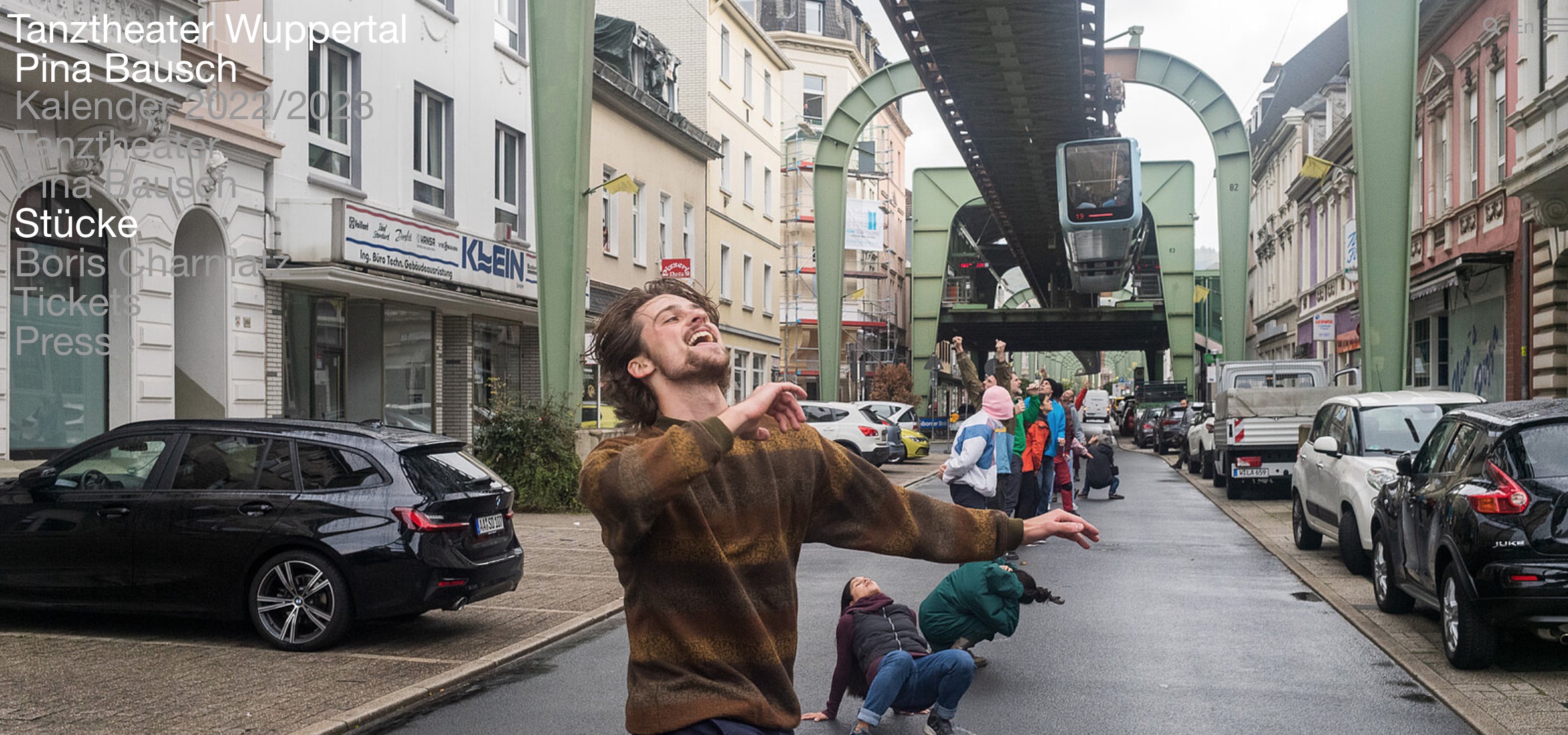
Webseite-Pina-Bausch
DANCE AS SELF-EXPERIENCE
The fact that this was a so-called „community“ project rather than an „art“ project is probably in the eye of the beholder, whereby the former would correspond to the workshop character of the development process and its tasks, which should all be suitable for those who first came into contact with dance, or rather movement, (also) as a form of expression and (occasional self-)presentation. However, the person or persons should have been aware of the enormous responsibility that comes with the tasks for representation mentioned at the beginning, when they are given to lay people who have little or no (protective) technique for expression, when they are supposed to turn their innermost selves outwards.
Wouldn’t a, perhaps wild, dance in a rush of colour have been perfectly adequate as a task instead of overloading this with terms that can only be read well in some feuilletons or by public sponsors anyway?
The participants nevertheless expressed their enthusiasm for this experience many times. This very personal gain of „creating and celebrating“ together in public through and with dance inevitably (unfortunately) comes up against the almost uncontrollable technical communication possibilities of our time. And many a participant may have been very unpleasantly confronted with the effects of modern voyeurism and the malice that some „gaffers“ wanted to provoke. The fact that even politicians, including members of the Bundestag, outed themselves as such does not bode well for the final decision on the construction of the hoped-for Pina Bausch Centre, which has been postponed until the end of 2025.
NOT NEW BUT SO FAR OF ITS OWN FREE WILL
Even though it is already part of the long-standing practice of Tanztheater Wuppertal Pina Bausch and some of its dancers to work with amateurs of all ages, to teach them dance theatre and to develop pieces with them that have been performed. Or works that have been explored and shown as part of the „UNDERGROUND“ series, for venues outside the theatre space. However, all of this has so far always been done of their own free will.
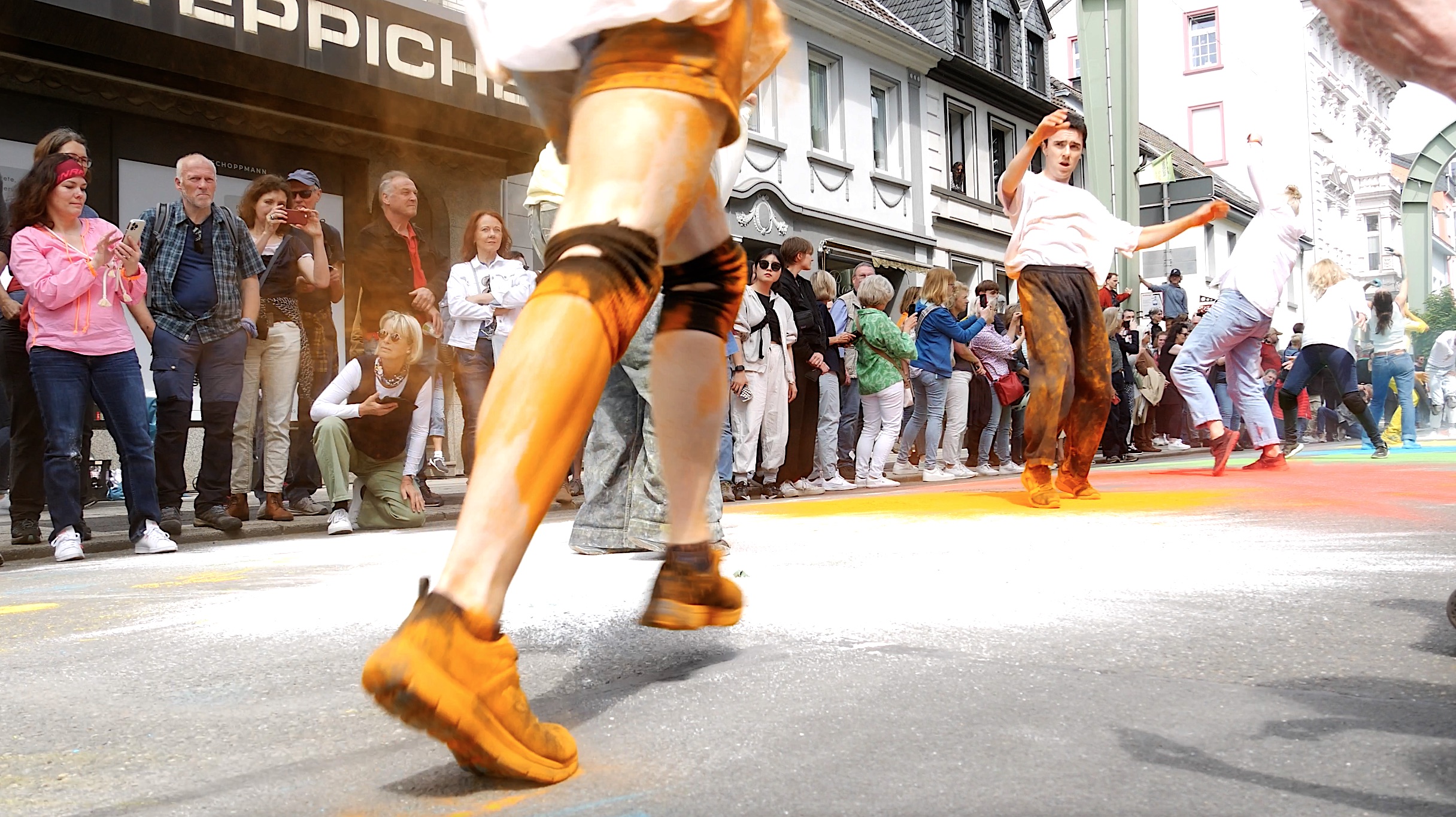
WUNDERTAL-Boris-Charmatz©TANZweb.org_Klaus-Dilge
DOES THE CHILD NEED TO GET SOME FRESH AIR?
For Charmatz, leaving the protected space is part of the concept. He already made this clear at his inaugural press conference and for this he was presumably also brought in by those who signed his eight-year contract as intendant and artistic director. „Dancing in the Rain“ in the open air and on streets, squares and also cathedrals. On meadow, sand, asphalt and stone….
The only problem:
The dancers of the Tanztheater Wuppertal, some of whom have trained and worked hard all their lives to one day work with Pina Bausch or, after Pina’s death, to dance the unique repertoire of the icon of dance theatre, probably did not and certainly would not have chosen this.
Even more: quite obviously, the conditions and prerequisites for the honest, authentic embodiment and interpretation of Pina Bausch’s works, such as PALERMO PALERMO, which was also shown as part of the „Wonder Week“, at least at the highest level, are so NOT (yet?) harmonised with the ideas and concepts of the new artistic director and the resulting conditions and prerequisites. (See our article on PALERMO PALERMO).
AHNEN suspect
The visitors to the Pina Bausch Foundation’s 1987 film performance of the same name at the CINEMA in Wuppertal probably also suspected that the AHNEN would have already guessed this. Pina Bausch’s NO BUDGET film, in which she wanted to show no more and no less than what she was interested in, was the second contribution to the „Wundertal“, followed by a discussion and question-and-answer session with long-time companions who, among others, were also featured in this film essay: Bénédicte Billiet, Jean-Laurent Sasportes and Julie-Anne Stanzak.
SOMNOLE and PALERMO PALERMO
as further contributions to the mini-festival, have been discussed in detail in separate articles. Clicking on the titles will take the reader to the corresponding articles.
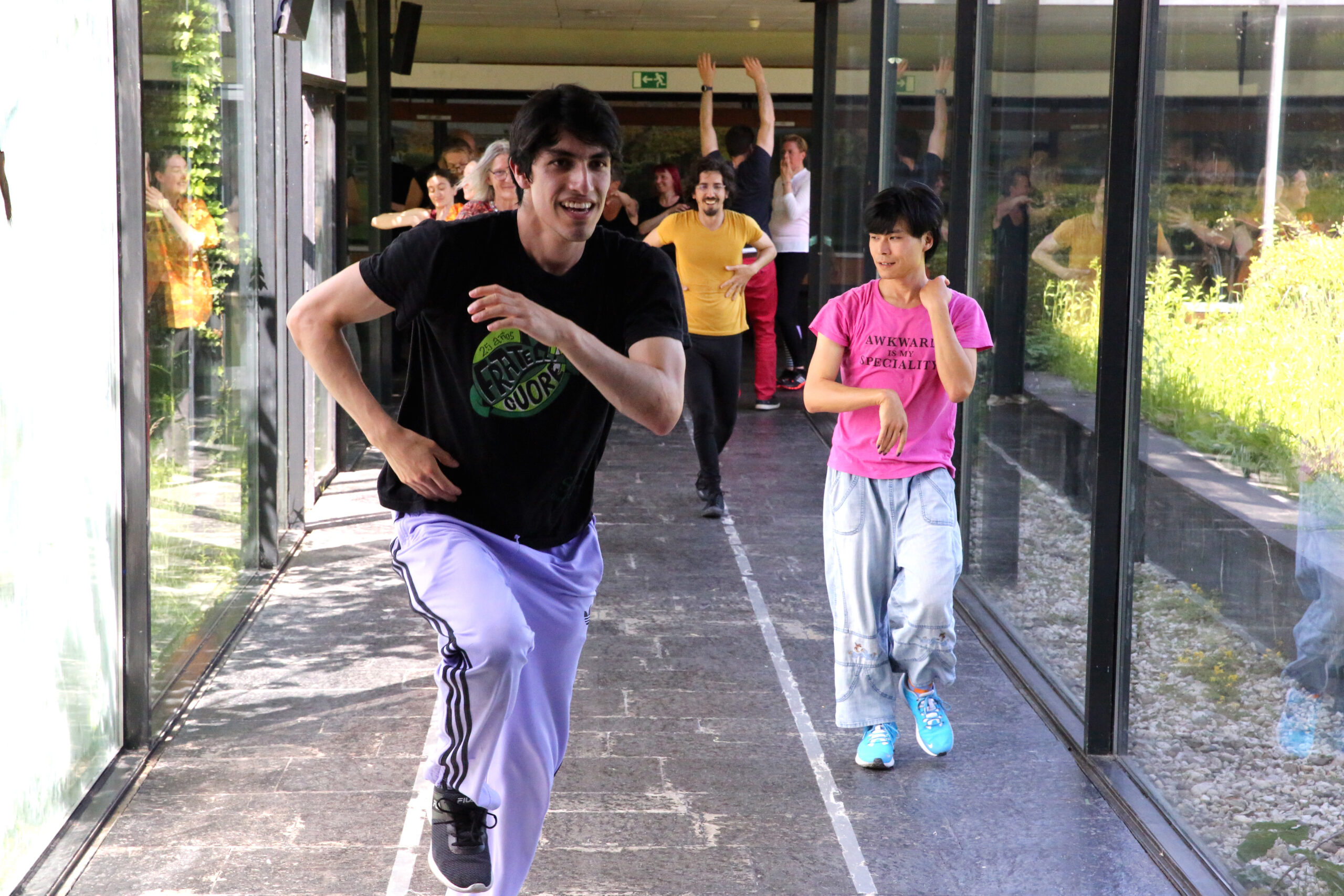
A Dancers Day©Ursula Kaufmann
A DANCER’S DAY
Boris Charmatz was occasionally called the „world champion of self-promotion“ by several prominent media in Berlin in 2017, when he was supposed to get the famously brilliantly failed Volksbühnen artistic directorship, with its attendant financial disaster, going in dance terms at Tempelhof Airport, the Volksbühne’s chosen satellite venue at the time, for Chris Dercon. There, too, he (or the Volksbühne’s marketing) presented „unique“ formats that he had long before developed elsewhere and that had taken place there.
A DANCER’S DAY is also part of this „warm-up repertoire“ of the likeable Frenchman, here even to be taken literally, with which he suggests to people with an affinity for dance that they have slipped into the life of a professional dancer for a whole day or have at least been able to participate in it at close quarters. And here in Wuppertal, this may also be made credible with the help of some company members who take part in it and perform it as part of their own employment.
That sounds unintentionally negative now, because this illusion can also be gratifying for those who take part in it, and that is already a success in dance education.
Charmatz likes it lavish, likes total expenditure as the principle of his concept dance, knows about the happiness hormones that can be released in the process. In contrast to the fine and multi-layered dance artworks of a Pina Bausch or choreographers like Ohad Naharin, to name another artist of dance creation, who are able to touch deeper layers of being, this seems one-dimensional and crude and often boring in its predictability.
SURPRISINGLY INSENSITIVE
Yet Boris Charmatz’s words from the programme booklet sound anything but coarse or boring. The dancer Charmatz knows what he is talking about. Rather, his words in the programme sound cautious, sensitive and as a homage: „…the minutes after a show – these are quite extraordinary moments. The focus is on the stage, that is right and important, but the before and after also have a magic. …“ This would have to mean the artists who were still on stage in PALERMO PALERMO at the near end of DANCER’S DAY.
That sounds like „letting it reverberate“, pausing, silence…
How easily and sustainably Charmatz could have touched and won over the spectators and participants of the DANCER’S DAY in front of the opera house with such a unique gesture of silent connection to his colleagues…
Instead: IMMEDIATELY and QUICKLY before people leave – EVENT! – Opportunity lost…
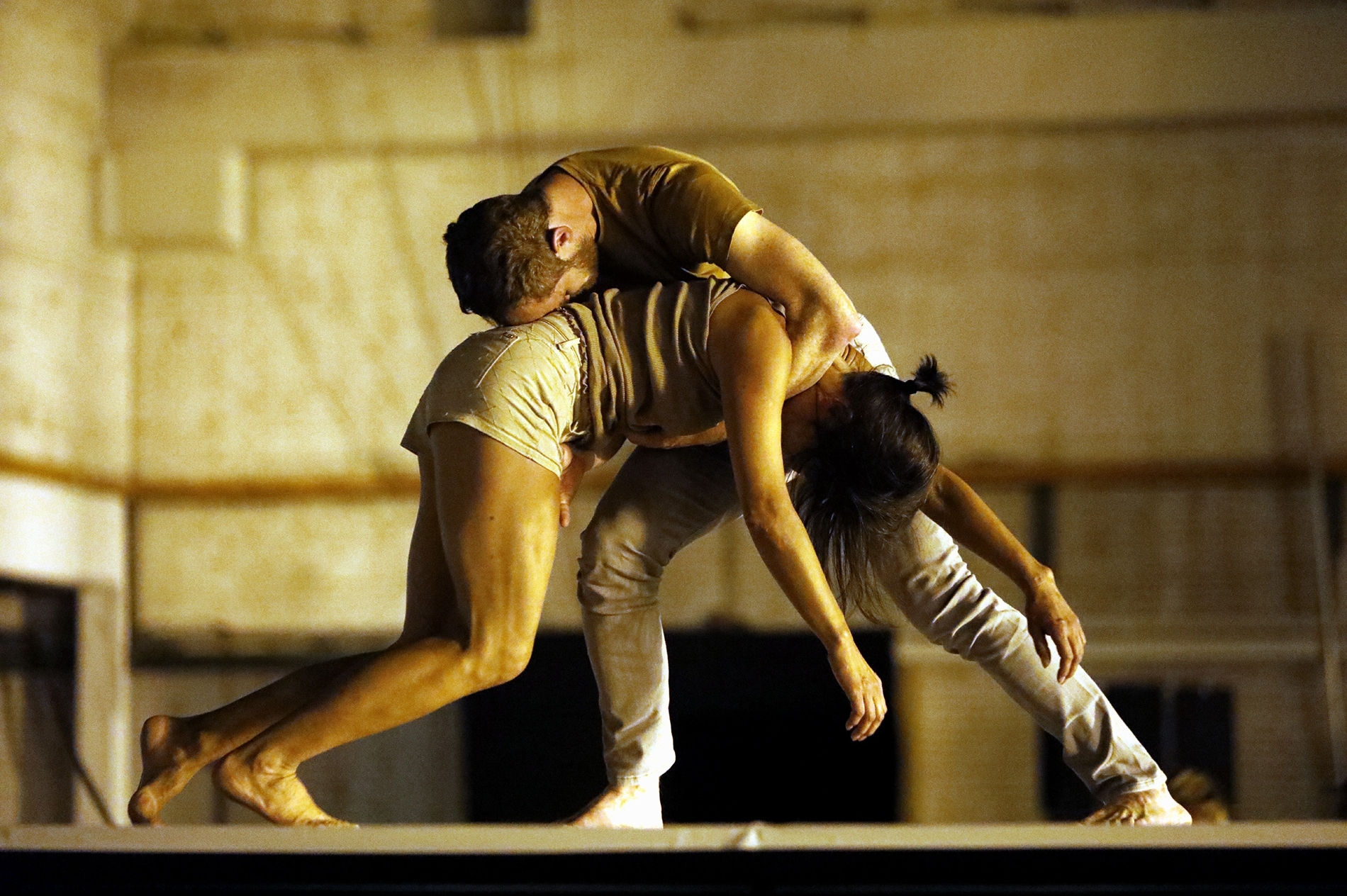
Bolero_Odile-Duboc©Ursula-Kaufmann
IRRTUM | MISSINTERPRETATION
Sometimes one is inclined to see too much of a good thing in a dramaturgy or gesture, as in the conclusion of the two packed DANCER’S DAY days, which had obviously brought much joy to the participants.
As a reminder or also for information: when Pina Bausch died in 2009, Merce Cunningham followed shortly afterwards and Odile Duboc also died a short time later.
She created the work „Trois Boléros“ in 1996, of which, according to Duboc’s legacy, only the second part, BOLERO 2, which she created for and with Boris Charmatz and Emmanuelle Huynh, may still be performed.
It was precisely this piece that was now danced by Emmanuelle Huynh and Boris Charmatz to Ravel’s famous driving composition, in a recording by the RAI Symphonic Orchestra (Milan) conducted by Sergiu Celibidache, in front of the Wuppertal Opera House following the Bausch piece.
In this floating, slow duet, which almost comes to a sculptural standstill and braces itself with all its might against the driving ductus of time, two bodies seek each other out as if magnetically attracted to each other, revealing all conceivable variations of touch.
After the two dancers had performed the piece in its original form for several years since 1996, Boris Charmatz and Emmanuelle Huynh presented a slowed-down version of Bolero 2 at the opening of the Musée de la danse, also in 2009(!), calling it „étrangler le temps“ (strangle time).
Partly as a tribute to Odile Duboc, but also as an autobiographical gesture that plants traces of their own work in this duo that remains close to the original, „étrangler le temps“ thus forms a dividing line between two eras: a concentration of time…
Between „étrangler le temps“ and its original version, a dialogue takes place that raises questions of interpretation, archive and transmission. Within this extension, which Odile Duboc has dedicated her life to exploring, another history of dance is being written, by the moving bodies that created it and perpetuate it.*
Even though Huynh and Charmatz danced Duboc’s original „Boléro 2“ on these two evenings, it stands to reason to extend this sign into the future, into the time to come….
What an incredibly strong gesture and statement, dealing with the apparent core of the new artistic director’s task! – One would think so. But unfortunately this is not the case
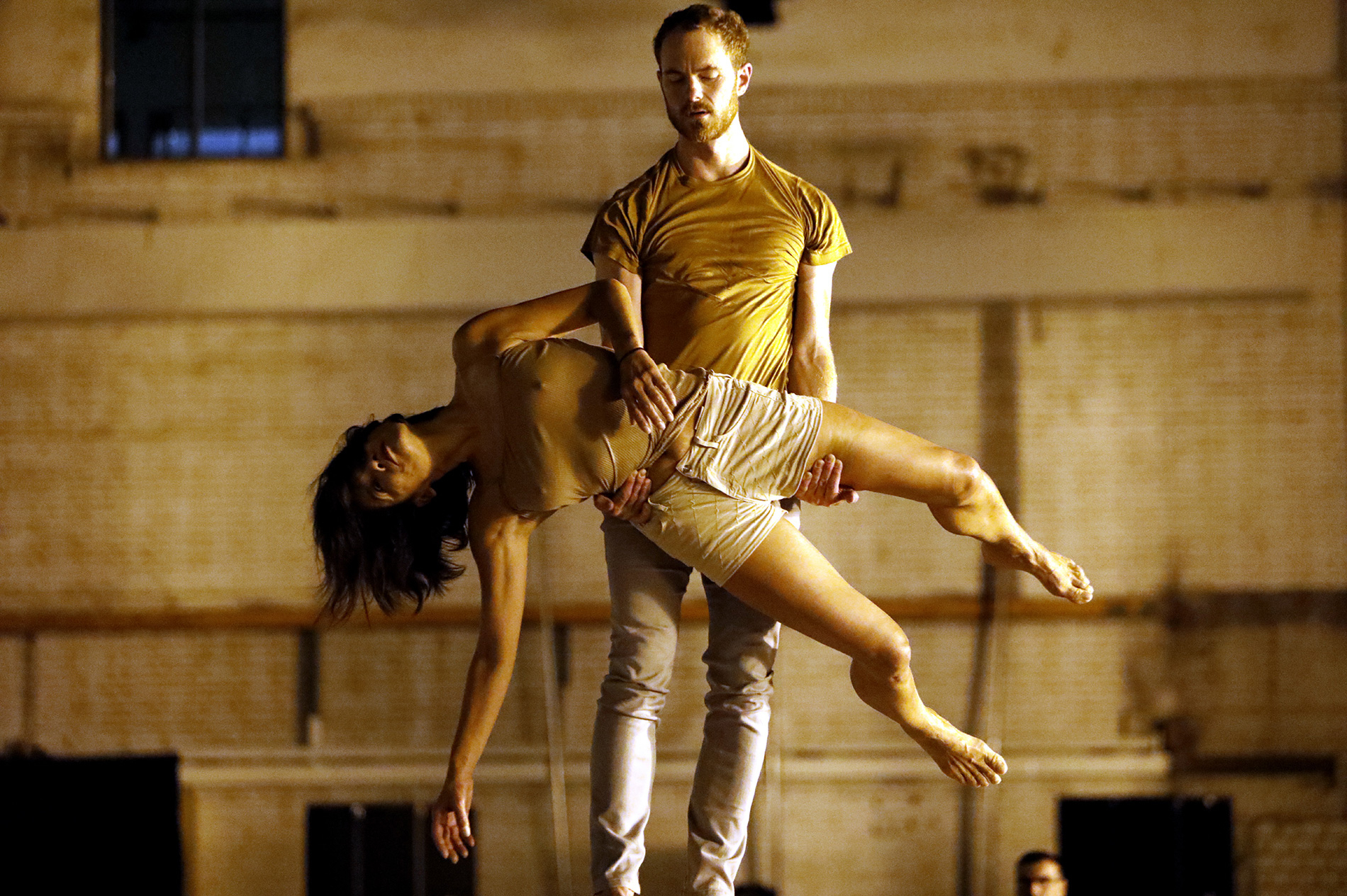
Bolero_Odile-Duboc©Ursula-Kaufmann
DÉJÀ VUE?
Charmatz has chosen the same set for Wuppertal’s „WUNDERTAL“ as he did in 2017 at Tempelhofer Feld, when he had danced this duo with Emmanuelle Huynh, also at the end of DANCER’S DAY.
The invention:
„WUPPERTAL IS THE NEW BERLIN“.
did not yet exist in 2017. Whether Boris Charmatz remembers Berlin fondly is uncertain, because the Berlin intermezzo was short and not accompanied by luck. The main reason for the failure, for which of course Chris Dercon was primarily responsible but which affected everyone, was the dissolution of the entire ensemble of the Volksbühne Berlin at the time of and due to the change of artistic director.
History has a tendency to repeat itself if we don’t take action against it.
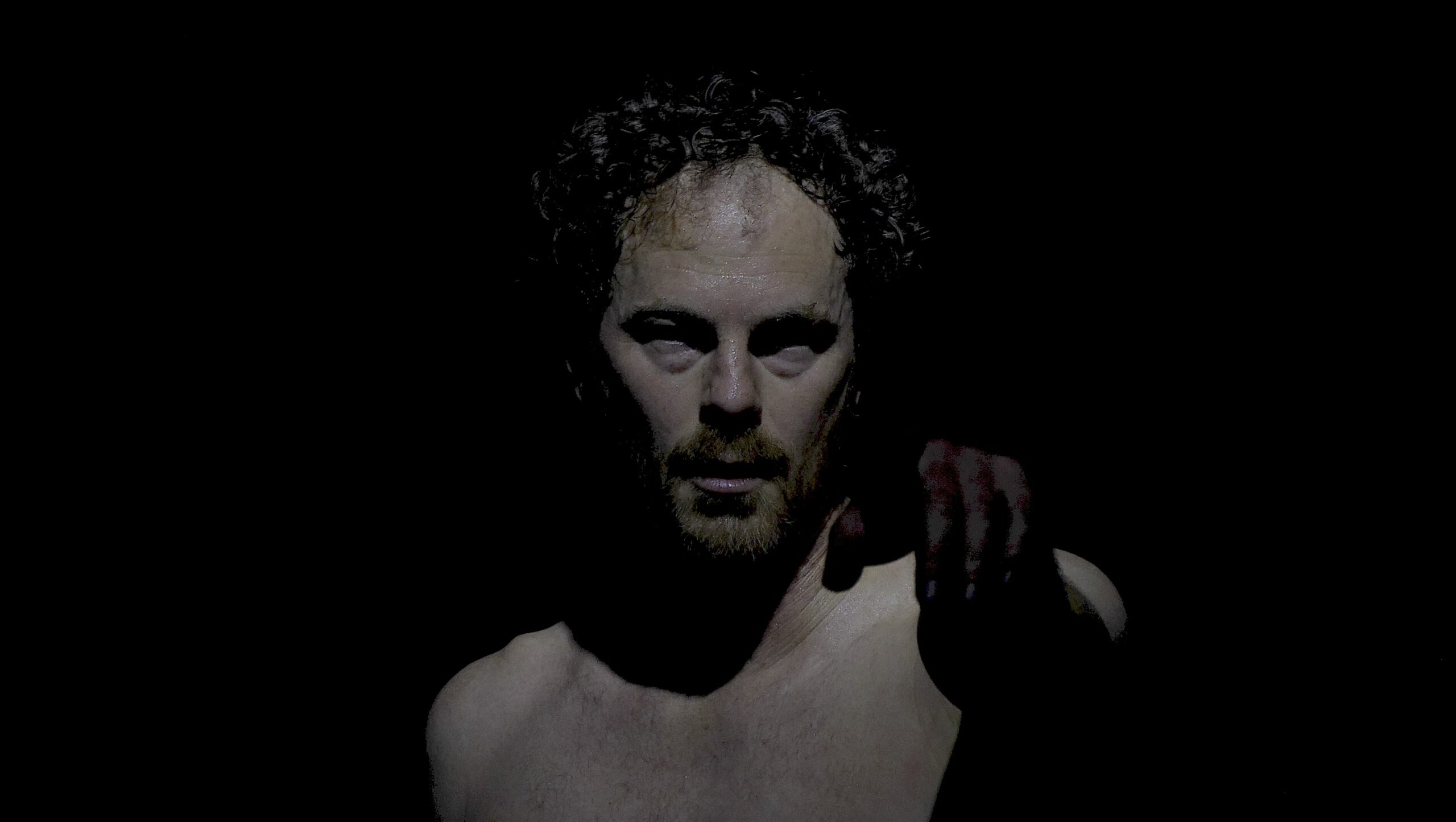
SOMNOLE_Boris Charmatz@TANZweb.org_Klaus Dilger
DIALOGUE IS NEEDED TO WORK ON THIS
Even if these nine days of „Wundertal“ may have been a great success for Boris Charmatz and his label [terrain], the new artistic director and artistic director has not come a millimetre closer to solving his actual task, which he himself has called „HYBRID“, rather the opposite:
The presumably newly won (possibly only temporary) support could tempt Charmatz to think he is in a stronger position than before, this could make him more uncompromising in leading the future of Tanztheater Wuppertal Pina Bausch and in dealing with the previous ensemble, and blind to the fact that he actually needs two ensembles: one for his own works, if he wants to develop them as he has done so far, and one if he wants to preserve and maintain the unique quality of the performances of Pina Bausch’s works and develop them further.
Charmatz needs for his previous works, which are often based on the repeatedly mentioned concepts and principles of mass, expenditure, the dissolution of traditional theatre venues, towards named public places and structures, yes also occasionally of the coarse and poetic assertion, of repetition up to the dissolution of gestures and movements, approaches that all have their justification and may be interesting for some, perhaps even many, no or other performers than those that Pina Bausch’s pieces require, regarding their goodness and the corresponding qualities.
Harmonising the two in the foreseeable future seems difficult or impossible. If a solution is not found, either the work of the dance theatre icon will change drastically, or, on the level of casualness, it will be brought to the stage as one copy of many copies, with an ensemble that no longer speaks Pina Bausch’s language as its „mother tongue“ and thus no longer distinguishes itself from the bulk of the companies. Why the world would then still want to see the Wuppertal ensemble, instead of the Paris Opera, the Bavarian or Berlin State Ballet, in Wuppertal or anywhere else in the world with Bausch’s repertoire, is for everyone to answer.
If Charmatz looks back honestly and self-critically at his previous work and his colleagues, he will have to recognise and accept that not all of the artists in the current ensemble find themselves artistically and dance-wise in the kind of pieces he does, and may even feel underchallenged or physically overburdened.
This initial situation can and will only be resolved in open dialogue, promptly, before it develops into a predictable conflict.
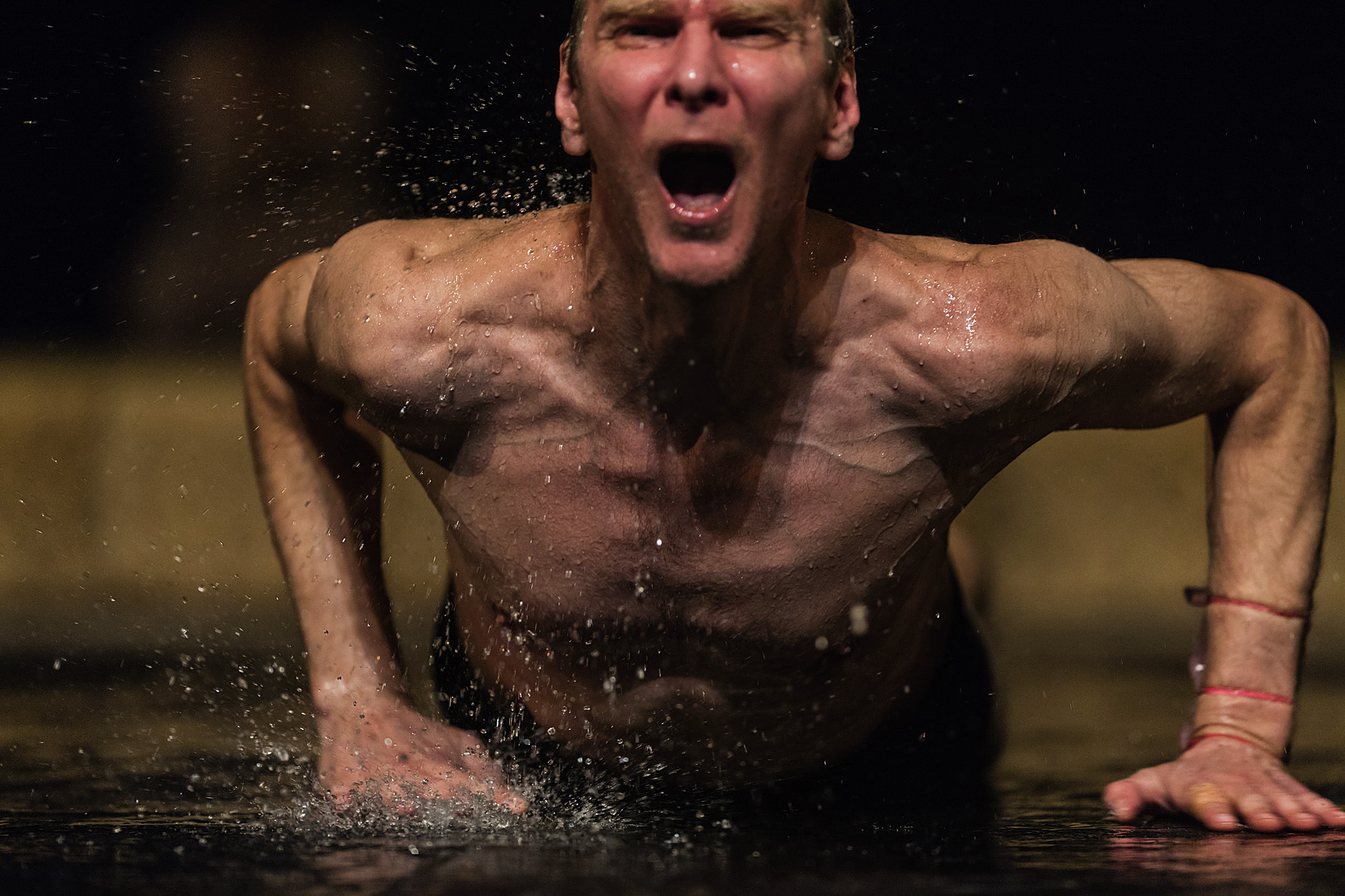
Palermo Palermo
Ein Stück von Pina Bausch_Andrey Berezin©Meyer Originals

